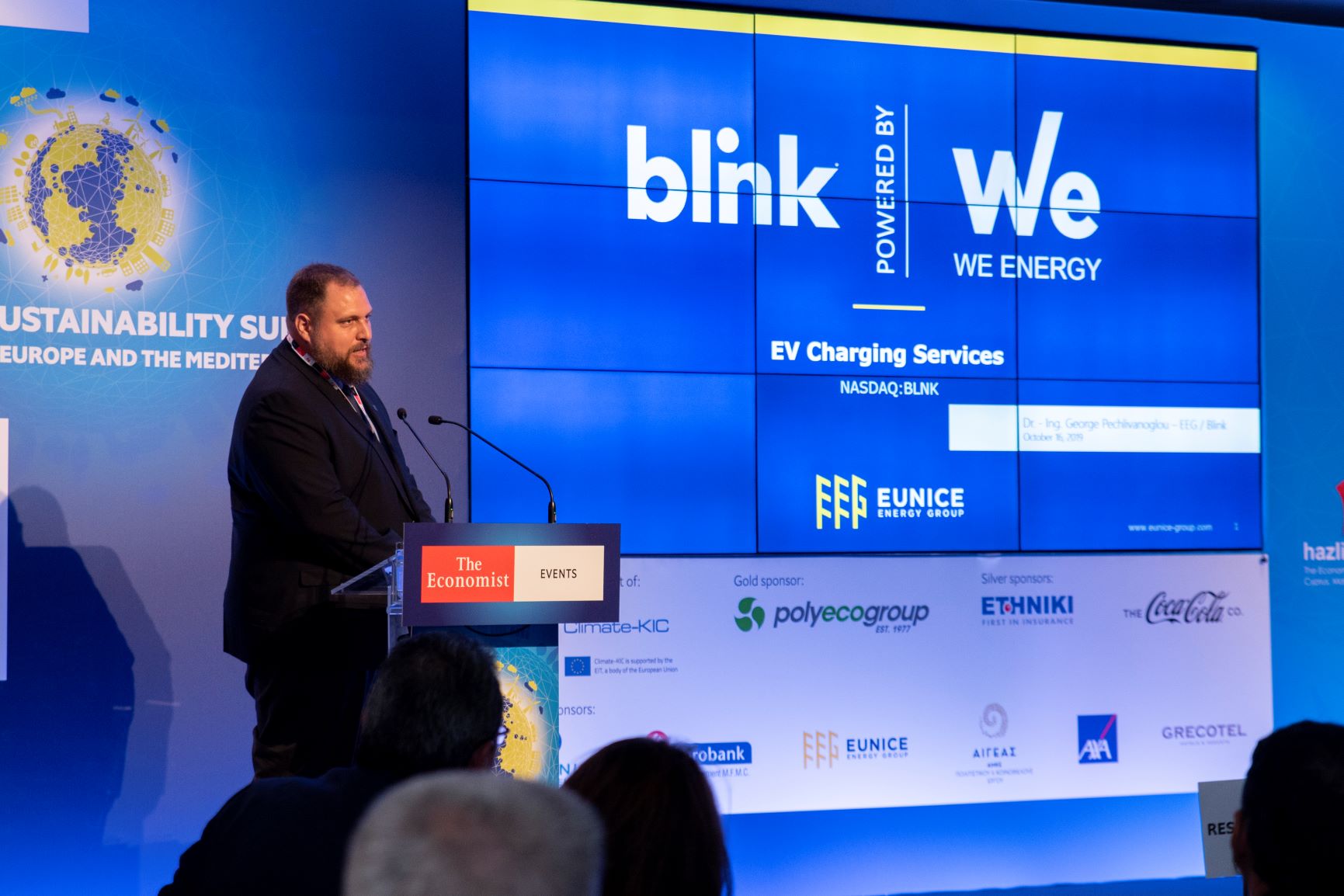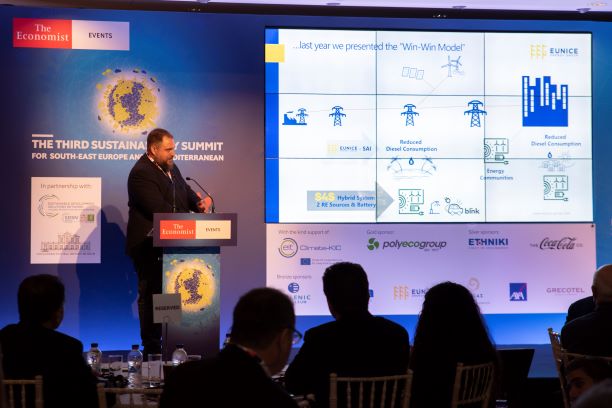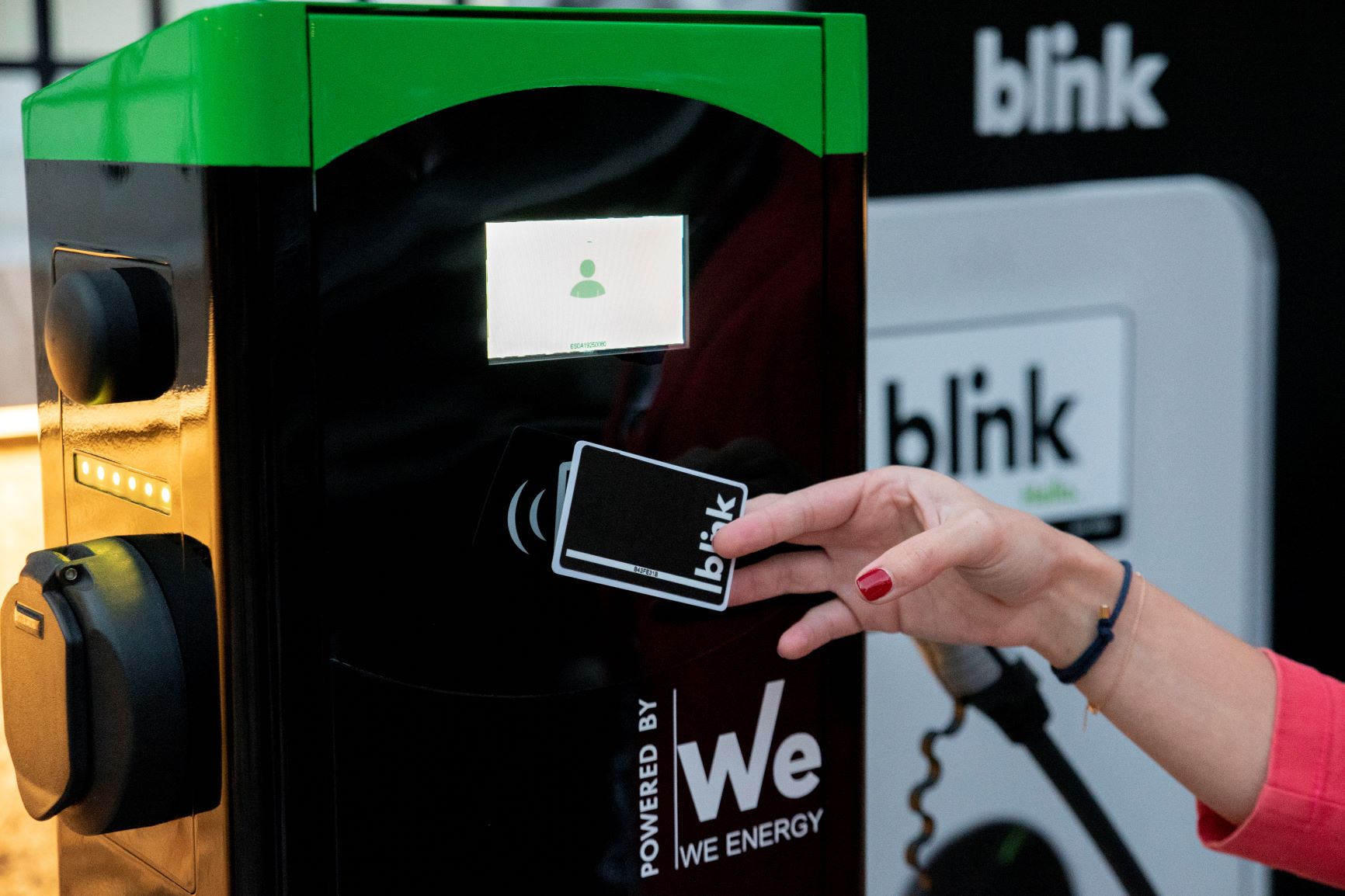Along with the generation of clean energy and the incorporation of innovative technologies into the energy system, e-mobility and green charging should go hand in hand, as EUNICE WIND Executive Director and Wind Energy Committee Chairman ASME Dr. Giorgos Pechlivanoglou pointed out, inter alia, speaking at the Economist conference with the title “Third Sustainability Summit for South-East Europe and the Mediterranean” held on October 16 & 17 at Goulandris Museum of Natural History in Athens.
He characteristically said that “e-mobility is inextricably linked to the production of renewable energy as well as the EV charging with green energy”. Moreover, he added that charging an electric car makes no sense unless it is done with clean energy.
In any other case any premium and promotion of e-mobility will not necessarily imply an immediate reduction in CO2 emissions when the providers’ energy mix is not 100%.
Finally, he emphasized that electromobility and charging of electric cars must be both technically and economically viable solutions.
Source: Energypress
Following are the key points of Mr. Giorgos Pechlivanoglou’s speech: “Third Sustainability Summit for South-East Europe and the Mediterranean” October 16-17, Goulandris Museum of Natural History, Kifissia, Athens, Greece
The follow-up to Tilos’ innovative project, which practically created the first “green island” in Greece, is being presented today at this conference and is the starting as well as reference point for the following solutions presented at our last meeting in the same conference, which concern the development of “smart grids” and the integration of all innovative technologies, such as electric drive, into the solutions of the new energy system.
What essentially follows the “smart islands” has to do with autonomous energy production, independent energy management, based on smart meters and energy management devices and is completed with e-mobility that practically converts the conventional fossil fuel automation into a form embedded in the grid, and launches a new practice in transportation.
E-mobility and green charging
E-mobility is being promoted as the new order of things in humanity’s struggle to reduce CO2 emissions and greenhouse gases, which is directly linked to both electricity generation and transportation sector.
Therefore, electricity is inextricably linked to the production of energy from renewable sources, as well as charging cars with green energy.
Charging an electric car makes no sense unless it comes from green energy. This is extremely important considering that at the moment the energy mix of the largest providers in our country and abroad is not 100% green.
There are only a few providers that have a 100% green energy mix. So, if we charge a car with non-RES energy and at the same time ask the states to subsidize or boost the introduction of electric cars into the market then we would have made a very big, logical, maybe even legal, jump towards the goal of subsidy. But maybe we would also be committing an offense. We have virtually subsidized a technology, without ensuring that it would lead to an immediate reduction in CO2 emissions. It is therefore extremely important to link the promotion of electric cars to green charging.
Sustainability and economy in e-mobility
Electric drive and electric car charging must be both technically and economically viable solutions. While there is a lot of talk about accelerating the new charger technology and the “supercars” that are coming into the market with huge power and very large batteries, it is important to think about what sustainable electricity really means. The promotion of fast-charging networks, which require huge amounts of grid power and ultimately are not economically viable, is apparently wrong. There is a need to rationalize the grid with chargers that follow consumer habits rather than standard practice.
Fast-charging and the best sustainable electric car charging solution
A vivid example is gas stations. The gas stations that according to the old model were powerful provided a fast-charging technical solution for a car. In such a case, within a minute a quantity of energy capable of charging our car for about 500-700 km was received. This electric drive is not feasible, at least in terms of economy and sustainability, since in an attempt to gain autonomy for about 1000 km, an amount of energy should be drawn from the grid equal to the instant consumption of a small town.
The requirements on infrastructures, networks, transformers and other network components are immense and so this is not a viable way to charge my car. What is important is to realize that electric drive, unlike gasoline and petrol, is available in many places as the electricity grid reaches everywhere.
The sustainable way to set up an electric car charging network is one that is customer-centric, follows the car and its driver, and “finds” the car where it is parked.
Let’s not forget that cars are parked for about 80% of their life. If we find where the car is parked then we will be able to set up a charging network that is sustainable and can offer a lower-cost solution. If we simply tried to make an electrical replica of a gasoline system then we would have failed as the result would be a system with very high costs and at the same time extremely low efficiency.










